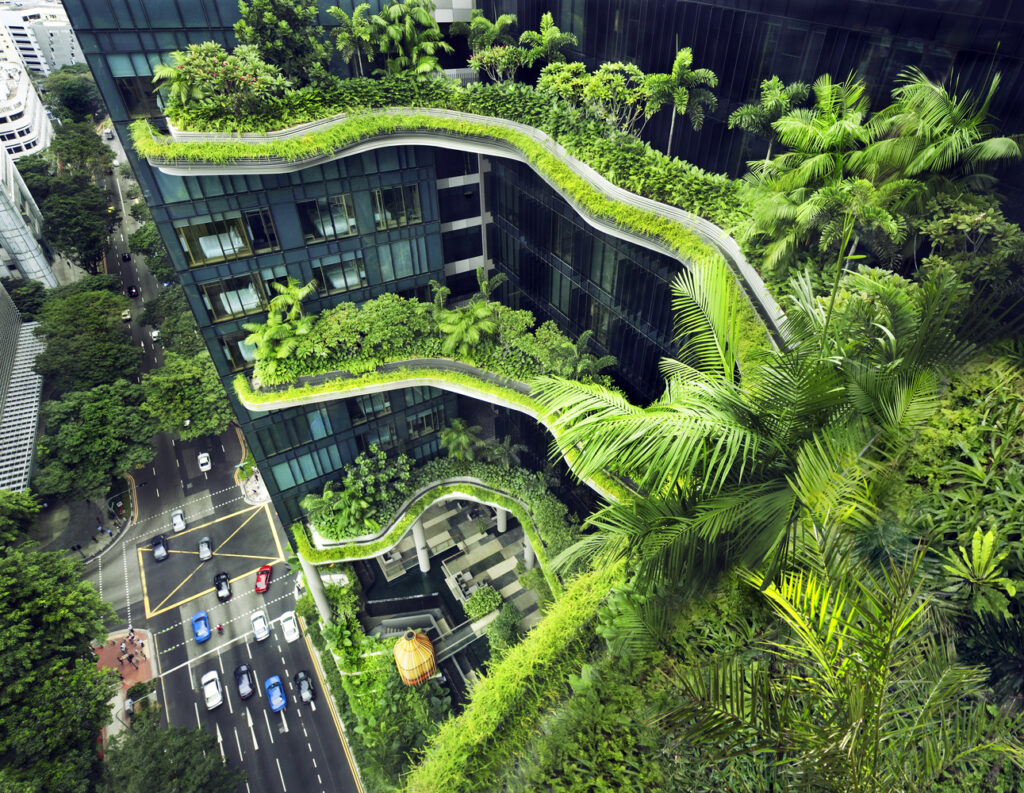In the hustle and bustle of modern urban life, the importance of green spaces cannot be overstated.
From parks and gardens to rooftop terraces and vertical forests, these sanctuaries of nature within concrete jungles offer a myriad of benefits for both the environment and the well-being of city dwellers. As urbanisation continues to accelerate globally, the integration of green spaces into urban planning has become increasingly vital.
Let’s explore why urban green spaces are invaluable and highlight five cities or countries leading the charge in their utilisation.
Improving Mental and Physical Health
Amidst the chaos of city life, urban green spaces provide much-needed respite. Studies have shown that spending time in nature can reduce stress, anxiety, and depression. Green spaces offer opportunities for physical activity, whether it’s jogging along a tree-lined path, practising yoga in the park, or simply taking a leisurely stroll. Access to greenery within cities promotes healthier lifestyles and overall well-being.
Enhancing Environmental Sustainability
Urban green spaces play a crucial role in mitigating the environmental impact of urbanisation. They act as carbon sinks, absorbing carbon dioxide and other pollutants from the air, thereby improving air quality. Additionally, green spaces help regulate temperature, reduce the urban heat island effect, and mitigate the risk of flooding by absorbing excess rainwater. Their presence fosters biodiversity, providing habitats for various plant and animal species.
Fostering Social Cohesion and Community Engagement
Parks and green spaces serve as communal gathering places where people from diverse backgrounds come together. They offer opportunities for social interaction, recreation, and cultural events, fostering a sense of belonging and community cohesion. By creating inclusive and accessible spaces, cities can promote social equity and strengthen bonds among residents.
Educational and Cultural Opportunities
Urban green spaces serve as dynamic educational and cultural hubs within cities. They provide platforms for environmental education programmes, community workshops, and cultural events that celebrate local heritage and biodiversity. Green spaces offer opportunities for people of all ages to learn about nature, gardening, and sustainable living practices. By hosting festivals, art installations, and performances, green spaces also contribute to the cultural vibrancy of cities, enriching the lives of residents and visitors alike while fostering a deeper connection to the environment and local communities.
Promoting Sustainable Urban Design and Planning
Cities around the world are recognizing the importance of integrating green infrastructure into urban planning practices. From incorporating green roofs and vertical gardens into building designs to reclaiming vacant lots for community gardens and pocket parks, innovative approaches to urban greening are emerging. By prioritising green spaces in city planning, policymakers can create more resilient, sustainable, and livable urban environments for current and future generations.
Now, let’s spotlight five cities or countries that are leading examples in harnessing the benefits of urban green spaces:

Singapore
Known as the “City in a Garden,” Singapore has prioritised greenery in its urban development strategy. The city-state boasts an impressive array of green spaces, including the iconic Gardens by the Bay and numerous rooftop gardens, local parks, conservation areas, and more. Singapore’s commitment to urban greening has not only enhanced its environmental sustainability but also elevated its global reputation as a green city.
Copenhagen, Denmark
With a strong emphasis on sustainability and livability, Copenhagen has integrated green spaces seamlessly into its urban fabric. The city is renowned for its extensive network of parks, waterfront promenades, and bicycle-friendly infrastructure. Initiatives such as the Copenhagen Green Roof Strategy demonstrate the city’s dedication to maximising greenery in urban areas.
Amsterdam, Netherlands
Renowned for its progressive urban planning and commitment to sustainability, Amsterdam has prioritised green spaces as integral components of its urban landscape. The city boasts an extensive network of parks, gardens, and tree-lined canals, providing residents with ample opportunities to connect with nature. Amsterdam’s emphasis on cycling infrastructure, green roofs, and sustainable development exemplifies its dedication to creating a greener, more livable city.
Madrid, Spain
Spain’s capital city, Madrid, boasts an impressive array of green spaces that provide oases of tranquillity within its urban landscape. The expansive Buen Retiro Park, with its lush gardens, serene lake, and cultural attractions, is a beloved destination for locals and tourists alike. Madrid’s commitment to sustainability is evident in initiatives such as the Madrid Rio project, which transformed a former highway into a vibrant parkland along the Manzanares River, showcasing the city’s dedication to reclaiming urban space for greenery and recreation.
Stockholm, Sweden
Recognised for its innovative approaches to urban planning and environmental sustainability, Stockholm seamlessly integrates green spaces into its urban fabric. The city’s numerous parks, such as Djurgården and Kungsträdgården, provide havens of tranquillity amidst the urban landscape. Stockholm’s commitment to renewable energy, waste management, and green infrastructure positions it as a global leader in sustainable urban development.
These cities serve as inspiring examples of how integrating green spaces into urban environments can enhance quality of life, promote environmental sustainability, and create more resilient communities.
FEATURED IMAGE: Kampung Admiralty, designed by Ramboll Studio Dreiseitl and WOHA. Image Courtesy of WOHA

